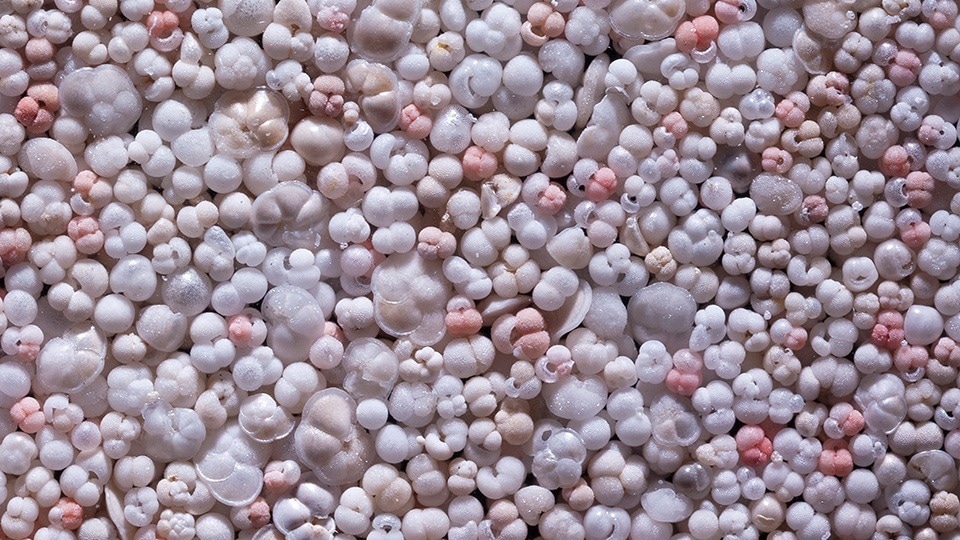Human-induced climate change seems to have had a significant impact on Earth's biodiversity. Several species’ habitats, including those in the oceans, are diminishing, and invasive species are conquering new regions.

Planktonic foraminifera are microorganisms that live in the uppermost water layers of all oceans. When they die, their small calcareous shells sink to the bottom of the ocean and remain there in the sediment. Such fossil foraminifera document the state of the oceans and, through their study, provide a glimpse into the past. Image Credit: MARUM – Center for Marine Environmental Sciences, University of Bremen; M. Kucera
A group of researchers from Bremen and Oldenburg investigated how species communities in the North Atlantic have evolved over a span of 24,000 years — since the last ice age — in a comprehensive data analysis. Species have moved north as anticipated, but new communities have also formed, even after temperatures have steadied. The findings have now been published in the journal Nature Ecology & Evolution.
Coral reefs are being affected by oceanic heat waves, and Atlantic species are becoming more common in the Arctic.
The main issue now is understanding how biodiversity will continue to evolve as the waters continue to warm. This is a difficult topic to understand as life has a secret weapon in its closet: evolution. Species can adapt to new conditions with its help.
The main problem is that evolution occurs across centuries and millennia, making it challenging to capture in laboratory experiments. However, scientists can use fossils to see into the past and learn how biodiversity evolved under comparable climate changes in the past.
Scientists at the University of Bremen’s MARUM Center for Marine Environmental Science and the University of Oldenburg’s Institute for Chemistry and Biology of Marine Environments (ICBM) have examined the prevalence of fossil plankton species in the Atlantic Ocean after the last ice age.
They discovered that several species first migrated to higher latitudes as anticipated as the oceans continued to warm. Strangely, scientists discovered that new species assemblages also developed during the process and that the change in assemblages did not entirely coincide with ocean warming.
Anne Strack, Dr. Lukas Jonkers, and Prof. Michal Kucera from MARUM at the University of Bremen, as well as Dr. Marina C. Rillo and Prof. Helmut Hillebrand from the Institute for Chemistry and Biology of Marine Environments (ICBM) at the University of Oldenburg, examined a large data set on the species composition of fossil.
This enabled the researchers to precisely monitor how species composition changed across the North Atlantic with the onset of the last strong warming in Earth’s history (after the last ice age). When the results were examined, the researchers identified unexpected patterns.
We were stunned to realize that the species composition of the plankton continued to change long after the temperature had stabilized again in the current warm period.
Anne Strack, Study First Author, University of Bremen, MARUM
Anne Strack adds, “It has long been known that species assemblages change when their environment changes. For instance, when ocean temperatures rise, species migrate to higher latitudes. We can also observe this migration to higher latitudes in our data from the North Atlantic. But the amazing thing is that the ‘native’ species have not migrated at the same rate.”
This asymmetry between immigration and emigration resulted in the development of novel species assemblages that were not present anywhere else on Earth during the ice age, particularly in the mid-latitudes.
Even more astonishing, these newly thrown-together communities were not a transient phenomenon, but persisted for several thousand years.
Michal Kucera, Professor, University of Bremen, MARUM
The study’s findings thus offer crucial hints about what may happen to marine ecosystems as a result of continuing ocean warming. Researchers back computer simulations that claim that anticipated global warming will also result in the formation of novel species assemblages.
The creation of new plankton communities may have significant ramifications for essential ecosystem functions due to new direct or indirect ecological interactions.
This study also contributes to how we understand today's rapid biodiversity change, because it shows us that we will not see the response of marine life to present-day environmental changes until far into the future.
Helmut Hillebrand, Professor, Institute for Chemistry and Biology of Marine Environments, University of Oldenburg
The research is the result of a collaboration between marine geologists and paleontologists from the University of Bremen and ecologists from the University of Oldenburg as part of the Cluster of Excellence “The Ocean Floor—Earth’s Uncharted Interface.”
Journal Reference:
Strack, A., et al. (2022) Plankton response to global warming is characterized by non-uniform shifts in assemblage composition since the last ice age. Nature Ecology & Evolution. doi.org/10.1038/s41559-022-01888-8.